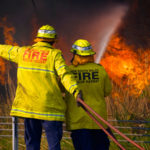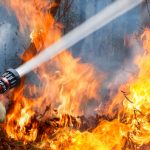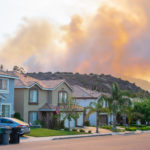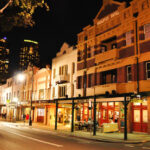Arson: A Weapon of Damage, Destruction and Death Throughout the Ages
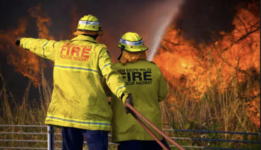
The power and influence of fire cannot be overstated.
From the time it was first generated by lightning impacts to the planet earth, to humans generating and using it to warm bodies and cook food, to its nefarious uses in warfare, persecution, genocide and politically motivated sabotage, fire has been a source of awe, a means of sustenance and comfort, and a weapon of damage and destruction unparalleled in its influence on society.
This article will take a look at the impact and some of the human uses of fire throughout the ages, with a particular emphasis on arson – the intentional use of fire to damage or destroy.
Let’s start close to home:
The use of fire by First Nations peoples
Like Indigenous populations in other parts of the world, Australian Aborigines used fire to regenerate the land for vegetation purposes, in addition to hunting animals forced to flee the flames.

It was called Fire-stick Farming
Australian National University studies suggest this occurred 120,000 years ago, to enhance the biodiversity (Plants, animals and micro-organisms) of the region.
Australian Tragedy – The Black Thursday Bushfires
Things didn’t always go to plan, however, as shown by the Black Thursday Bushfires of 1851, which saw the Colony of Victoria suffer the destruction of 12 million acres of land.
12 lives were lost, with in excess of one million livestock, with the cause being attributed, anecdotally, to a combination of lightning strikes and gold-prospecting miners burning dense vegetation to make the search for gold easier.
The Black Saturday Bushfires
Australia’s so-called Worst Natural Disaster at the time, the 2009 Victorian Bushfires, were far from natural.
173 lives, including 17 Firefighters, were lost, in addition to the razing by fire of 2,029 homes, amongst 3,500 buildings in total, in excess of 1 million wildlife and approximately 4,500 square kilometres of land.
400 individual fires were lit, with some by lightning strikes and collapsed power lines, however, many were the result of crimes of arson.
The Black Summer
The Black Summer nationwide bushfires of 2019-2020 saw the largest reported loss of lives, surpassing the 1851 Black Thursday and the 2009 Black Saturday bushfires, with 34 killed as a direct result of the fires and 445 dying due to smoke inhalation in the aftermath; although it is difficult to accurately substantiate the precise figures.
Several thousand homes were destroyed, along with many thousands of other buildings including businesses, leaving Sydney’s central business district engulfed in smoke and crippling economic activity.
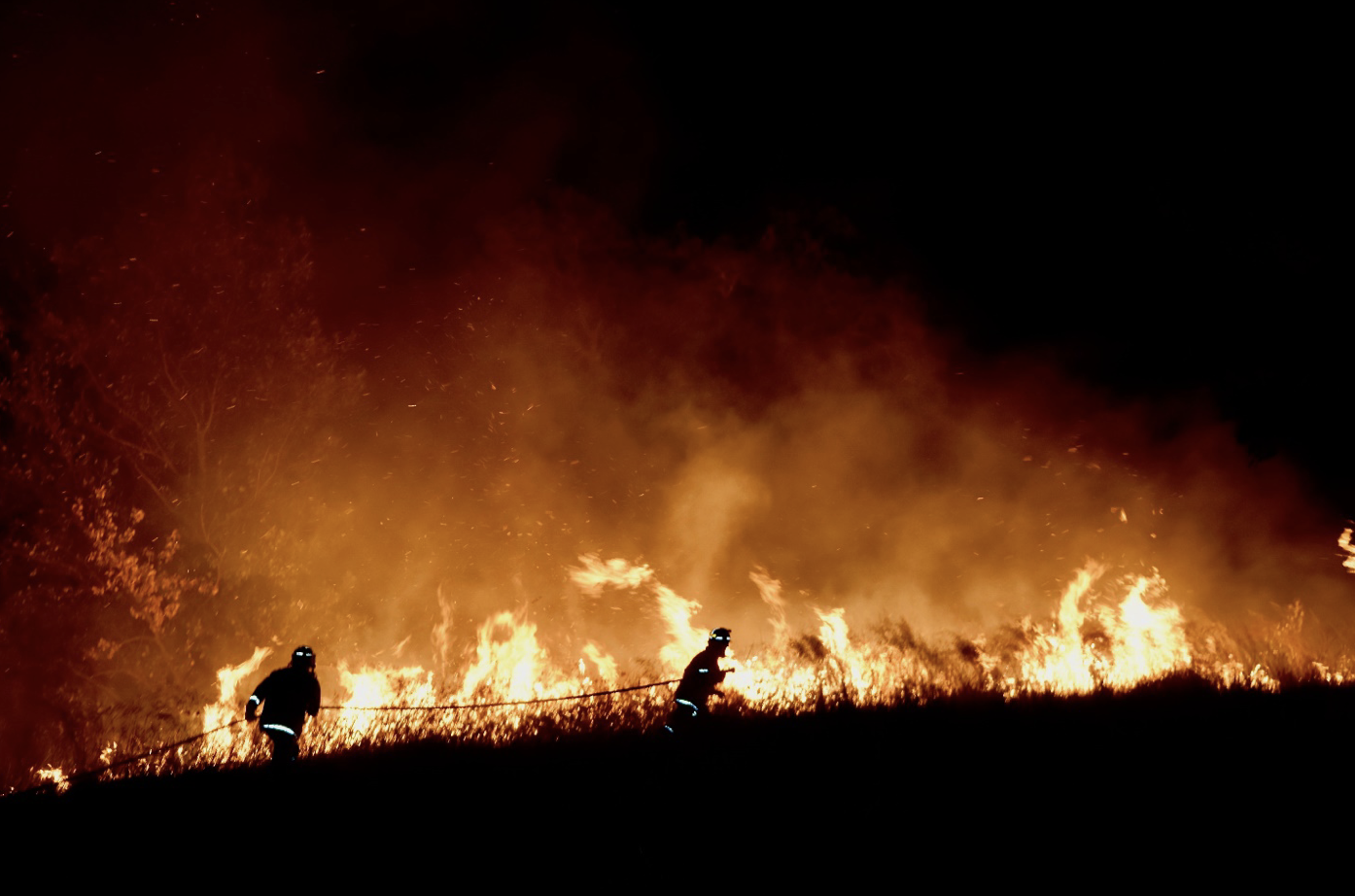
If aliens do exist, they would have seen The Gospers Mountain bushfire, as it was visible from the International Space Station and was so vast that it burned for in excess of 3 months.

On some days, the air pollution, according to Associate Professor, Brian Oliver, a respiratory scientist from Sydney’s University of Technology, was 11 times the safe level.
Some of our brave firefighting heroes died, some were airlifted in critical condition to hospital and many others were and would be affected with ill health as a result of saving Australia.
Inexplicably, permission was granted for the Sydney City fireworks display to go ahead, resulting (you’ve guessed it) in further fires set in motion.
Loss of Animal Life
3 Billion Terrestrial Vertebrates (reptiles, birds and mammals) were burnt to death, several to the point of extinction, apart from an estimated 10% which could possibly have escaped the inferno.
Experts estimate this number comprised in the region of 140 million mammals, 180 million birds, 50 million frogs and 2.5 billion reptiles. Turtles and fish were not included in the statistics.
According to a study funded by World Wildlife Fund Australia (WWF) and coordinated by Sydney University’s professor, Chris Dickman, the only comparable destruction of wildlife occurred during the major oil spills in Alaska and the Gulf of Mexico.
The Exxon Valdez oil tanker ran aground in the Prince William Sound, Alaska, resulting in one of the largest environmental disasters in the world.
No deaths occurred during the disaster, however unfortunately, 4 people died during the clean-up operation.
This was similar to BP’s operation of the Deepwater Horizon Oil Platform which exploded in the Gulf of Mexico.
Sadly, 11 people died.
Ecological Legacy of Oil Spills
Life in the ocean where the spills occurred will never be the same.
Baby dolphins, tuna and amberjack amongst other species either suffer death at 6 times the normal rate and/or develop abnormalities of the heart and other organs, that at the very least will be life-shortening.
In addition, cardiotoxicity (damage to the heart muscle by a toxin) may well become the norm in other marine life.
Ecological Legacy of The Black Summer Bushfires
Livestock, koalas, kangaroos, wallabies possums, amongst others, would see the common integument (set of organs forming the outermost layer of an animal’s body) such as feet, hooves, hands and skin seriously injured, including respiratory illnesses.
Smaller creatures in a study funded by the Victorian Government’s Bushfire Biodiversity Response and Recovery Program, found that the biggest obstacle to eventual recovery was multi-fold.
As a result of what appears to be significant degradation of their habitat, imminent survival is seriously problematic at this juncture, due to those reptiles and frogs no longer being able to hide from predators, nor shield from ultra violet radiation, due to the destruction of foliage, etc.
Equally important, as studies show, such degradation of habitat creates hazardous zones which disrupt population connectivity after an event such as a bushfire, which also destroys the bedrock-like pools.
This includes water quality deterioration, which can lead to infection.
Can Bushfires Cause Chytridiomycosis?
The question must be asked. Is it possible that the illness chytridiomycosis is a further legacy in these species.
Chytridiomycosis is a fungal disease which may eventually lead to heart failure in frogs, toads and other amphibians.
Why this is suggested is that by destruction of the amphibian’s habitat, the ultraviolet radiation may cause harm to the amphibians due to their naked skin.
This may make them more vulnerable in a habitat which has been stripped of all cover by bushfires, leaving it open to perhaps contracting this disease, which is prevalent in some parts of Australia.
Firefighting Chemicals
In addition, some firefighting retardants have the propensity to runoff into nearby watercourses, further adding to potential dangers of not only amphibians, but surviving wildlife and humans also.
Australian National University Studies, as does other research, appear to disagree with certain aspects related to the cause of this disease in amphibians.
Even as of 2021, the Australian Department of Climate Change, Energy, the Environment and Water (DCCEEW) suggest it is a disease experts differ in their opinion on, whether it is a novel pathogen and even whether the fungus is native or exotic to Australia.
Will the remainder of the NESP study show that bushfires contribute to the contracting of chytridiomycosis?
Infected Frogs
The Australian Government’s National Environmental Science Program (NESP) 6-year study of amphibian species post the Black Summer bushfires, ponders over the question of how such a high number of frog species have chytridiomycosis.
Could it have something to do with their habitat being destroyed and the resultant issues in relation to that?
After the Black Summer bushfires, a high percentage of the 38 frog species, including the spotted tree frog (aka Spencer’s river tree frog), particularly in Southern New South Wales and Victoria, were found to have the chytrid fungus.
What is certain is that the bushfires killed large number of amphibians.
The destruction of their habitat by fire causes what is known as a blackwater event, which is when post fire debris and sedimentation reduces dissolved oxygen in the water, leading to the water becoming hypoxic.
What occurs then is that because the frogs use their skin to absorb oxygen, (that is to breathe) by the lack of oxygen in the water, they may drown.
Indeed, many tadpoles and younger frogs do die often when this occurs.
Saving Amphibians, including the Spotted Tree Frog
As a result of NESP collecting samples of the species from multiple sites, it will work to maximise the genetic diversity of the captives, held at Zoos Victoria; before eventually releasing them back home, having been cured of chytridiomycosis, to contribute to fighting existing chytrid fungus and any like diseases which may be caused by future bushfires.
Incidentally, one of the principal partners involved in NESP is the New South Wales Office of Environment, Energy and Science Saving Our Species Program.
Also involved are Sydney University and the University of New South Wales.
Back to the Issue of Arson
Arson was one cause, but not the major cause of the Black Summer fires, with lightning strikes, accidents, reckless actions, dense forestation & vegetation, changes in fire-prevention strategies, abnormal wind changes, but also global warming, all contributing to this disaster.
Australian Home Affairs Minister, Peter Dutton, a former police officer, stated that 250 individuals had been charged with arson, though this figure is disputed in some circles.
What Proportion of Fires are Considered Arsons?
The Australian National Centre for Researching Bushfire and Arson report that arson is responsible for 13% of fires lit by arsonists, with 37% more, suspected of having been lit by arsonists.
However, according to the Australian National University (ANU), it could have been much worse, due to lower fuel levels in some unpopulated areas of Northern Australia, though this was not replicated in Southeast Australia.
How Black Summer Affected Other Countries
January 2020 saw Argentina, Chile, Uruguay and Brazil suffer from smoke from the fires, after crossing the South Pacific Ocean, about 11,000 km away.
New South Wales Was the Hardest Hit
Due to NSW facing fires in many areas of the State, it declared an emergency with an inspired response not only from within Australia, which saw reinforcements relieving exhausted fire-fighting crews in all affected regions.
The world also responded by sending firefighters, supplies and equipment from New Zealand, Singapore, the USA and Canada, supported by our own Australian Defence Forces.
The Weapon of Choice for the Oppressed
Privatisation, high taxes, low wages, excessive food prices, saw a campaign of arson as a tool of protest for hungry and disillusioned British citizens.
Similar was occurring in Europe.
From 1750, laws associated with the privatisation of Common Land (land which was available to rural communities for putting their livestock to pasture and a source of wood for heating etc.) and Industry in England, followed slowly but surely by many other countries throughout the world, created the crime of arson as the weapon of choice for working class citizens.
Privatisation prevented those who hunted for game and collected firewood in the forests and Deer Parks, creating starvation in families, which by virtue of the Magna Carta, had permitted these rights for the King’s subjects since 1215.
The Magna Carta, originally known as the Magna Carta Libertatum is a Royal Charter of Rights signed by King John, which permitted his subjects to avail themselves of the Common Land, which by various utilisation generally fed their families.
Compounding this problem, was the reduced wages forced on workers, leading to homelessness and poverty.
To combat this, communities took to a form of protest, which saw the burning of Common Land and Deer Parks, in addition to homes and businesses, not only in medieval England, but Europe also.
From the 1790s, arson increased rapidly as a deadly form of protest, particularly in rural communities in areas of high unemployment and partly as a result of low harvest yields.
The early 1820s saw the properties of rich farmers subjected to arson attacks by protesters complaining of increased food prices and high taxes.
Swing Riots
What were called Swing Riots, commenced in 1830, shortly after the invention of the first commercial Match in 1829, ironically called Lucifer.
Swing riots were a rising up of agricultural employees in England in 1830, protesting against agricultural mechanisation which was reducing jobs and also the tough working conditions.
They went on a rampage destroying the machines, killing livestock and setting fire to barns throughout England.
In an attempt to force a pay rise, the arsonists who were mainly agricultural workers, destroyed machinery which had been introduced to replace manpower, but also committed regular arson attacks on buildings and haystacks.
Captain Swing, whom the riots were named after, was the fictitious signature attached to letters containing threats, which had been delivered to the authorities and landlords.
British Law in the early 19th century which meant death for arsonists, changed however, in 1837 to Life Imprisonment, or transportation to Australia. Still not good odds, though desperate times call for desperate measures seemed to be the motto of that period of time.
250 people were killed during the riots, with 1,000 agricultural workers transported to Australia.
The Industrial Revolution
Then things settled down and between the 1820’s and the 1840’s with the Industrial Revolution commencing in earnest in Britain, it quickly spreading to Europe and the rest of the world, including America.
The Swing Riots were still going on in 1830, though it was clear that mechanisation had started in 1750, so technically it could be said that was the very beginning of the Industrial Revolution.
The Industrial Revolution Continues
It is clear that the Industrial Revolution didn’t end. It only entered another phase.
The first revolution harnessed water and steam, with the second involving electric and the third using electronics and information technology and the fourth enhancing artificial intelligence and all that this entails.
Of course, whilst arson has subsided, we have seen the advent of terrorism, but that is an article for another day.
And who knows, will the new industrial revolution further reduce human employment leading to further uprisings?
A Weapon to Garner Political Power
The most infamous and horrific crime of arson was committed by the German Government, under the Nazi Party, led by an Austrian born, Adolph Hitler, before and during World War 11. Gassing and incineration of approximately 6 million of the Jewish Race took place in what were called Concentration Camps, 6 of them, mainly in Germany and Poland.
Each had their own Crematorium Ovens.
The level of inhumanity was staggering, with whole families subjected to a most horrendous death, each knowing full well what was occurring.
Historians are of the belief that the arson attack on the Reichstag in 1938, which burnt the German Parliament in Berlin to the ground, was contrived by the Nazi Party, which attributed blame to the Communists supported by Jews.
This enabled Hitler to enact emergency legislation, named the Reichstag Fire Decree, abolishing German Constitutional Protections and paving the way for what became the Final Solution (The genocide of the Jewish Race).
This commenced with arson attacks on hundreds of German Jewish Synagogues, murdering many Jews in the process.
It was also the beginning of hundreds of thousands of Jewish people being arrested and transported to the first Concentration Camps.
Mass Murder by Arson
50 years later, during the International Criminal Tribunal for the former Yugoslavia War Trials, two Paramilitary Bosnia Serb Commanders were sentenced to Life Imprisonment and 30 years respectively, for the crime of arson against 60 mostly women and children; whom they robbed and set on fire, leading to their deaths in furtherance of an act associated with genocide.
Attempted Genocide by Arson
And so, it goes on. The United Nations, Amnesty International and Human Rights Watch, provided evidence to the world of the Scorched Earth Campaign, including satellite pictures; depicting in excess of 55 villages in Myanmar having been subjected to arson, by the Myanmar Military.
This has resulted in approximately 1 million Rohingya Muslims being made homeless, by the predominantly Buddhist Myanmar Government, in an effort to achieve a policy of Ethnic Cleansing in the Rakhine State of Myanmar.
Arson offences in New South Wales
The criminal law in New South Wales contains several offences against acts of larceny, which include:
Causing a bushfire
The offence of “causing a bushfire” is contained in s 203E of the Crimes Act, which says that you may be charged with this offence if you deliberately cause a fire, and you are reckless as to whether that fire may spread to vegetation or public or private land. However, you will not be charged with an offence under this section where you started the fire under the direction of a fire fighter, or as part of your employment as a fire fighter, or where you caused the fire in the course of “hazard reduction operations” – i.e. back burning. Because of the serious consequences that may result from bushfires, the maximum penalty for this offence is 25 years imprisonment.
Section 100(1) of the Rural Fires Act 1997 (NSW) outlines the crime of deliberately lighting fires, mandating a maximum penalty of five years’ imprisonment and/or a fine of $11,000 for any person who, without lawful authority:
- sets fire or causes fire to be set to the land or property of another person, the Crown or any public authority, or
- being the owner or occupier of any land, permits a fire to escape from that land under such circumstances as to cause or be likely to cause injury or damage to the person, land or property of another person or the land or property of the Crown or a public authority.
The law also says that setting a fire when there is a total fire ban is to be considered an aggravating factor when sentencing, prescribing a maximum penalty of seven years’ imprisonment and/or a $120,000 for any person who commits an offence “knowing” there is a total fire ban in place.
This legislation also makes it clear that any person who, “without lawful authority, leaves (temporarily or otherwise) any fire they have lit or used in the open air before the fire is thoroughly extinguished is guilty of an offence.” This attracts a maximum penalty of 12 months in prison and a fine of $5,500.
It’s important to note that if a person actually dies as a result of a deliberately lit fire, then the offender could be charged with other serious offences such as manslaughter.
Destroy or damage property
Under section 195 of the Crimes Act 1900 (NSW), a person commits an offence if they intentionally or recklessly destroy or damage property belonging to another person. The maximum penalty for this offence where the damage is caused by fire, is imprisonment for ten years. If you commit this offence while in the company of others, the penalty increases to 11 years.
Furthermore, if you commit this offence during a ‘public disorder’ (such as a riot or violent protest), the maximum penalty is 7 years imprisonment.
If you use fire or explosives to deliberately or recklessly destroy or damage property that belongs to someone else during a ‘public disorder’ (such as a riot or violent protest), the maximum penalty is 12 years imprisonment.
Fire with intent to cause injury
Section 196 of the Crimes Act sets out the offence of destroy or damage property with the intention of causing injury to another person. This offence is punishable by a maximum penalty of 14 years if the damage is caused by fire (or 16 years if it is done during a public disorder).
Fire to dishonestly destroying or damaging property
Under Section 197 of the Crimes Act a person commits an offence if they dishonestly destroy or damage property by means of fire. This offence is punishable by a maximum of 14 years imprisonment (or 16 years if it done during a public disorder). This offence also includes a provision for circumstances where property is deliberately damaged in order to commit insurance fraud.
Receive all of our articles weekly
Author

